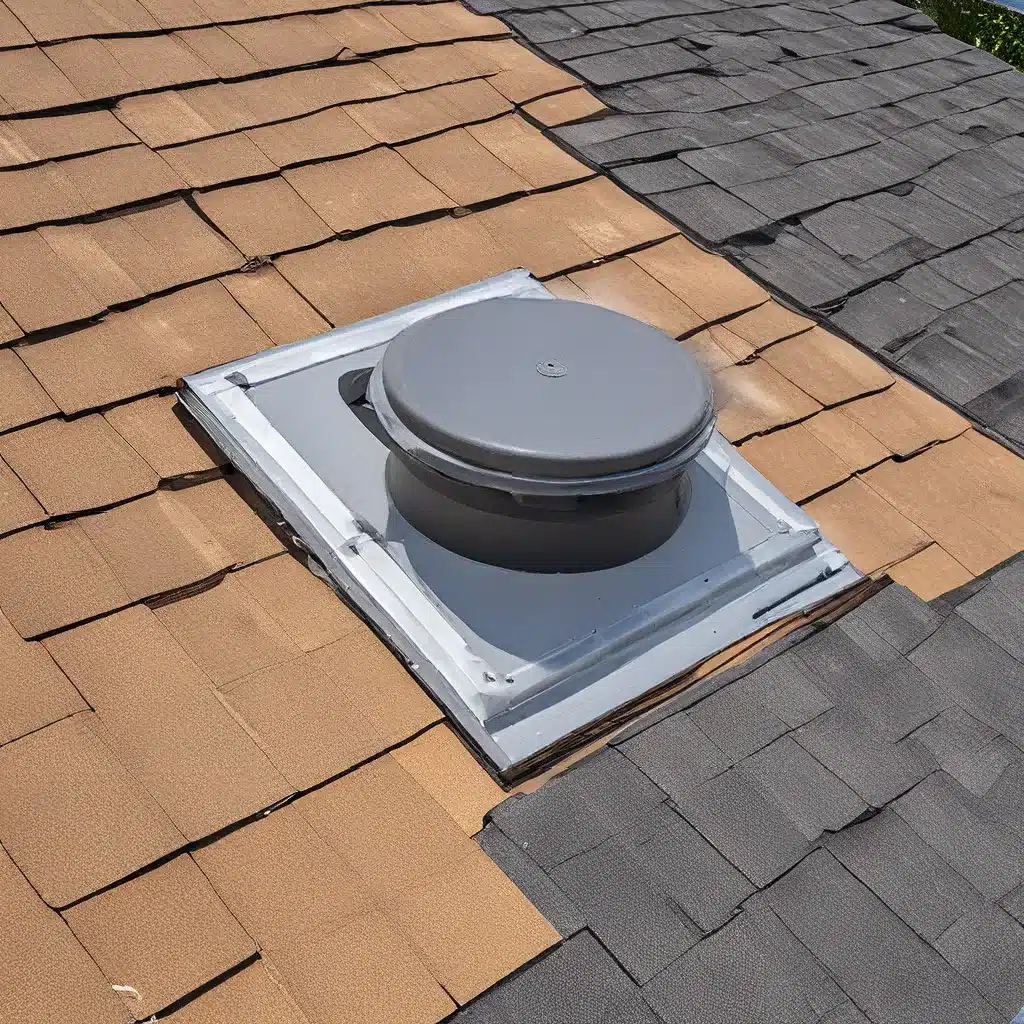
As a homeowner in the sunny South, I know all too well the challenges of keeping my house cool and comfortable during the scorching summer months. The relentless heat can make even the most energy-efficient home feel like a sauna, leaving me desperate for a solution. That’s why I’ve become a firm believer in the power of roof ventilation systems – these unsung heroes of home comfort can make a world of difference in the way I experience my living space.
Understanding the Importance of Roof Ventilation
Proper roof ventilation is crucial for maintaining a healthy, energy-efficient home, especially in the hot and humid climates found across the southern United States. Without adequate ventilation, heat and moisture can build up in the attic, leading to a host of problems ranging from stifling indoor temperatures to potential structural damage.
According to the Department of Energy, for optimal energy efficiency, your home should be properly insulated from the roof down to its foundation. This includes insulating the attic space, which can quickly become an oven if not properly ventilated. When hot air is allowed to accumulate in the attic, it can “short-circuit” the insulation, reducing its effectiveness and driving up your cooling costs.
But the benefits of roof ventilation go beyond just energy savings. Proper airflow can also help prevent moisture buildup, which can lead to mold, mildew, and even wood rot – all of which can compromise the structural integrity of your home. In the humid South, this is a particularly pressing concern that no homeowner can afford to ignore.
Evaluating Your Roof Ventilation Needs
So, how can you tell if your home’s roof ventilation system is up to the task? The first step is to take a close look at the existing ventilation setup. According to the experts at Southern Home Improvement, the key signs of insufficient ventilation include:
- Consistently hot and stuffy attic spaces
- Moisture buildup or condensation on attic surfaces
- Ice dams forming on the roof during the winter
- Visible mold or mildew in the attic or along the roof line
If you’re experiencing any of these issues, it’s a clear indication that your home could benefit from an upgrade to your roof ventilation system.
Choosing the Right Ventilation System
When it comes to improving roof ventilation, there are several different options to consider. The most common types of roof ventilation systems include:
- Attic Fans: These powerful electric fans are installed in the attic and work to actively draw hot air out of the space, helping to regulate temperature and prevent moisture buildup.
- Ridge Vents: These low-profile vents run along the peak of the roof, allowing hot air to passively escape while drawing in cooler outside air.
- Gable Vents: These vents are installed in the triangular gable ends of the roof, providing a direct path for hot air to exit the attic.
- Soffit Vents: Located under the eaves, these vents allow fresh outside air to be drawn into the attic, creating a natural airflow.
The right choice for your home will depend on factors like the size and layout of your attic, your local climate, and your overall energy efficiency goals. Consulting with a reputable roofing contractor can help you determine the most effective ventilation solution for your specific needs.
Maximizing Efficiency with a Whole-House Approach
While upgrading your roof ventilation is a crucial first step, it’s important to remember that your home’s energy efficiency is a holistic system. To truly optimize comfort and minimize cooling costs, you’ll need to take a whole-house approach to insulation, air sealing, and ventilation.
According to the Department of Energy’s Whole-House Ventilation guidance, proper insulation and air sealing are just as important as effective roof ventilation. By sealing up air leaks and ensuring your home is well-insulated from top to bottom, you can help your roof ventilation system work more efficiently, trapping cooler air inside while expelling the hot, stale air from the attic.
Incorporating Solar-Powered Roof Vents
One innovative approach to roof ventilation that’s gaining popularity in the South is the use of solar-powered roof vents. These advanced systems utilize photovoltaic panels to power electric fans, eliminating the need for a direct connection to your home’s electrical system.
The beauty of solar-powered roof vents is that they can operate independently, activating automatically when the attic temperature rises. This means they continue to provide effective ventilation even during power outages – a common occurrence in many southern regions during the summer storm season.
Additionally, solar-powered vents don’t add to your home’s energy bills, making them a cost-effective and eco-friendly solution for improving indoor comfort and reducing your carbon footprint.
Embracing the Future of Roof Ventilation
As homeowners in the South, we’re constantly seeking new ways to stay cool and comfortable while keeping our energy costs in check. Roof ventilation systems are a crucial piece of the puzzle, and the technology in this field is rapidly evolving.
From advanced sensor-driven systems that automatically adjust airflow to next-generation solar-powered models, the future of roof ventilation is both exciting and promising. By staying informed and working with skilled roofing professionals, we can ensure our homes are equipped to handle the unique climate challenges of the region.
So, whether you’re building a new home or looking to upgrade an existing one, make sure roof ventilation is at the top of your list. Your comfort, your energy bills, and the long-term health of your home will all thank you.